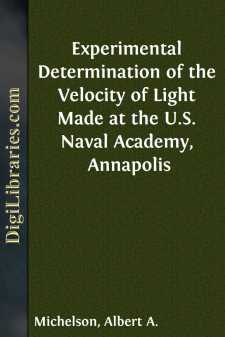Categories
- Antiques & Collectibles 13
- Architecture 36
- Art 48
- Bibles 22
- Biography & Autobiography 813
- Body, Mind & Spirit 142
- Business & Economics 28
- Children's Books 17
- Children's Fiction 14
- Computers 4
- Cooking 94
- Crafts & Hobbies 4
- Drama 346
- Education 46
- Family & Relationships 57
- Fiction 11829
- Games 19
- Gardening 17
- Health & Fitness 34
- History 1377
- House & Home 1
- Humor 147
- Juvenile Fiction 1873
- Juvenile Nonfiction 202
- Language Arts & Disciplines 88
- Law 16
- Literary Collections 686
- Literary Criticism 179
- Mathematics 13
- Medical 41
- Music 40
- Nature 179
- Non-Classifiable 1768
- Performing Arts 7
- Periodicals 1453
- Philosophy 64
- Photography 2
- Poetry 896
- Political Science 203
- Psychology 42
- Reference 154
- Religion 513
- Science 126
- Self-Help 84
- Social Science 81
- Sports & Recreation 34
- Study Aids 3
- Technology & Engineering 59
- Transportation 23
- Travel 463
- True Crime 29
Experimental Determination of the Velocity of Light Made at the U.S. Naval Academy, Annapolis
Description:
Excerpt
Theory of New Method.
Let S, Fig. 1, be a slit, through which light passes, falling on R, a mirror free to rotate about an axis at right angles to the plane of the paper; L, a lens of great focal length, upon which the light falls which is reflected from R. Let M be a plane mirror whose surface is perpendicular to the line R, M, passing through the centers of R, L, and M, respectively. If L be so placed that an image of S is formed on the surface of M, then, this image acting as the object, its image will be formed at S, and will coincide, point for point, with S.
If, now, R be turned about the axis, so long as the light falls upon the lens, an image of the slit will still be formed on the surface of the mirror, though on a different part, and as long as the returning light falls on the lens an image of this image will be formed at S, notwithstanding the change of position of the first image at M. This result, namely, the production of a stationary image of an image in motion, is absolutely necessary in this method of experiment. It was first accomplished by Foucault, and in a manner differing apparently but little from the foregoing.
In his experiments L, Fig. 2, served simply to form the image of S at M, and M, the returning mirror, was spherical, the center coinciding with the axis of R. The lens L was placed as near as possible to R. The light forming the return image lasts, in this case, while the first image is sweeping over the face of the mirror, M. Hence, the greater the distance RM, the larger must be the mirror in order that the same amount of light may be preserved, and its dimensions would soon become inordinate. The difficulty was partly met by Foucault, by using five concave reflectors instead of one, but even then the greatest distance he found it practicable to use was only 20 meters.
Returning to Fig. 1, suppose that R is in the principal focus of the lens L; then, if the plane mirror M have the same diameter as the lens, the first, or moving image, will remain upon M as long as the axis of the pencil of light remains on the lens, and this will be the case no matter what the distance may be.
When the rotation of the mirror R becomes sufficiently rapid, then the flashes of light which produce the second or stationary image become blended, so that the image appears to be continuous. But now it no longer coincides with the slit, but is deflected in the direction of rotation, and through twice the angular distance described by the mirror, during the time required for light to travel twice the distance between the mirrors. This displacement is measured by the tangent of the arc it subtends. To make this as large as possible, the distance between the mirrors, the radius, and the speed of rotation should be made as great as possible.
The second condition conflicts with the first, for the radius is the difference between the focal length for parallel rays, and that for rays at the distance of the fixed mirror. The greater the distance, therefore, the smaller will be the radius....


